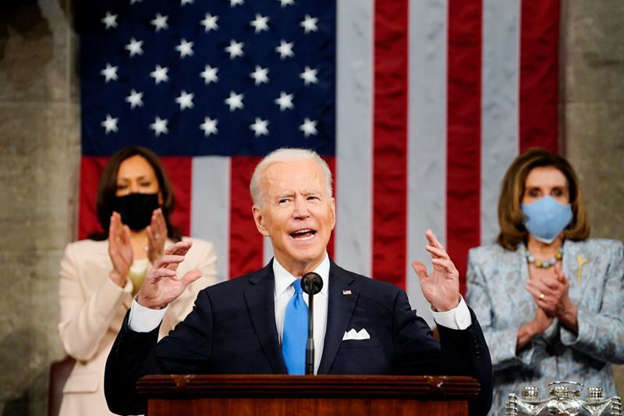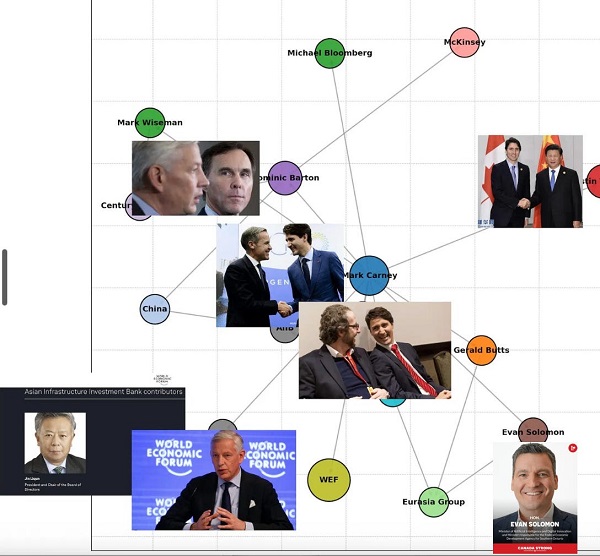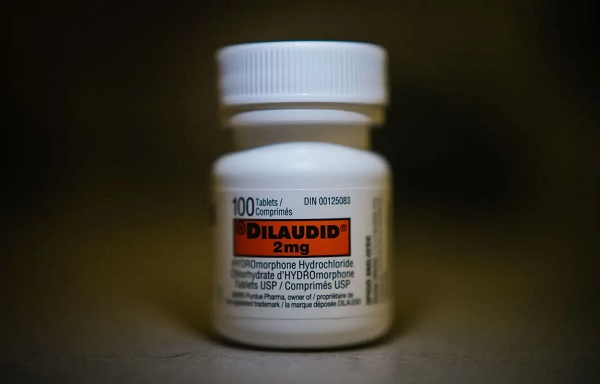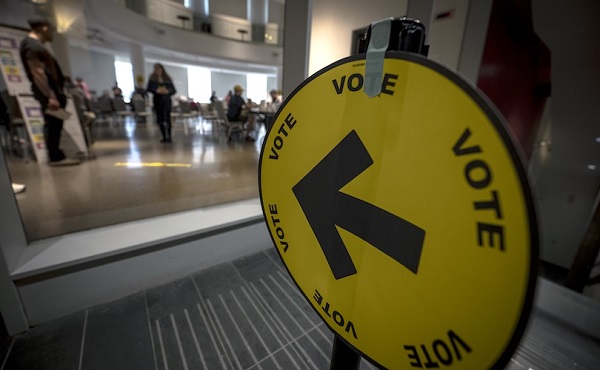International
Supreme Court Agrees to Hear Missouri v. Biden

From the Brownstone Institute
BY
The Supreme Court agreed to hear arguments over the Fifth Circuit’s grant of a preliminary injunction in Missouri v. Biden. As I mentioned in previous posts, the injunction would bar officials from the White House, CDC, FBI, Cybersecurity and Infrastructure Security Agency (CISA), and Surgeon General’s office from coercing or significantly encouraging social media platforms to censor constitutionally protected speech.
My fellow plaintiffs and I welcome this opportunity to defend the First Amendment rights of all Americans in the U.S. Supreme Court. We expect to hear from the Court soon regarding the hearing dates—it could be in February or March.
The Fifth Circuit panel of judges last month upheld the key components of U.S. District Judge Terry Doughty’s July 4 preliminary injunction order, prohibiting named federal officials from coercing or significantly encouraging social media companies to suppress legal speech.
That decision vindicated our claims that we—and countless other Americans—were blacklisted, shadow-banned, deboosted, throttled, and suspended on social media as part of the government’s years-long censorship campaign orchestrated by the federal government.
The Biden Administration’s censorship regime has successfully suppressed perspectives contradicting government-approved views on hotly disputed topics such as whether natural immunity to covid exists, the safety and efficacy of Covid-19 vaccines, the virus’s origins, and mask mandate efficacy.
Beyond covid, the documents we’ve obtained on discovery demonstrate that the government was also censoring critiques of its foreign policy, monetary policy, election infrastructure, and lighting rod social issues from abortion to gender ideology.
The vast, coordinated, and well-documented effort has silenced influential, highly qualified voices including doctors and scientists like my co-plaintiffs Dr. Bhattacharya and Dr. Kulldorff, as well as those like Jill Hines who have tried to raise awareness of issues. Though the US Supreme Court temporarily stayed the Fifth Circuit’s injunction until they make a ruling, I believes the Justices are ultimately unlikely to permit the egregious First Amendment abridgements our case has exposed.
The Fifth Circuit recognized that the Plaintiffs did “not challenge the social-media platforms’ content-moderation policies.” Rather, Plaintiffs challenged the government’s unlawful efforts to influence “enforcement of those policies.” The government gravely harmed the ability of Americans to convey their views to the public, and it deprived Americans of their right to hear opinions that differ from the government’s. Judge Doughty strikingly described the Administration’s conduct as “arguably the most massive attack against free speech in United States history” and “akin to an Orwellian Ministry of Truth.” He was right, and the US Supreme Court must not permit it.
Here are some reactions to the news from our lawyers at NCLA:
“NCLA is thrilled to have the opportunity to vindicate the First Amendment rights of our clients, and all Americans, in the nation’s highest court. We are confident that after a thorough review of the disturbing facts in this important case—which involves unprecedented government-imposed, viewpoint-based censorship—the Court will recognize the grievous, unconstitutional nature of the government’s conduct and enjoin it.”
— Jenin Younes, Litigation Counsel, NCLA“We are disappointed Americans’ First Amendment rights will be vulnerable to government infringement until this case is decided. But we are confident this Court, as strong as it is on First Amendment issues, will rule against the government and uphold our clients’ rights and liberties.”
— John Vecchione, Senior Litigation Counsel, NCLA“If anything, the Fifth Circuit’s decision did not go far enough in enjoining the reprehensible conduct exposed in this case. The facts of this case show government agencies censored speech in a deliberate effort to control the narrative on several controversial topics ahead of the last election. The First Amendment forbids such censorship, and the Supreme Court must never allow such mischief again, if we are to keep our democracy.”
— Mark Chenoweth, President, NCLA
Republished from the author’s Substack
International
This ends now: Trump orders Bondi to unseal Epstein grand jury testimony

Quick Hit:
President Trump on Thursday directed Attorney General Pam Bondi to pursue the release of grand jury records in the Epstein case, saying “this SCAM…should end, right now!” Bondi said she’ll ask the court Friday to unseal the transcripts.
Key Details:
- Trump said on Truth Social he had asked AG Pam Bondi to release “any and all pertinent Grand Jury testimony” tied to Epstein, pending court approval.
- Bondi responded Thursday evening, posting, “President Trump — we are ready to move the court tomorrow to unseal the grand jury transcripts.”
- Trump’s directive comes just hours after The Wall Street Journal published a report about a birthday card he allegedly wrote to Epstein—an allegation Trump has called “fake” and vowed to sue over.
Diving Deeper:
President Donald Trump on Thursday took to Truth Social to instruct Attorney General Pam Bondi to pursue the release of sealed grand jury records. “Based on the ridiculous amount of publicity given to Jeffrey Epstein, I have asked Attorney General Pam Bondi to produce any and all pertinent Grand Jury testimony, subject to Court approval,” Trump wrote. He then added, “This SCAM, perpetuated by the Democrats, should end, right now!”
Bondi quickly responded on X, confirming her team would be in court Friday to make the request. “President Trump — we are ready to move the court tomorrow to unseal the grand jury transcripts,” she wrote.
The renewed push comes in the wake of a Wall Street Journal article published Thursday that alleged Trump sent a sexually explicit birthday card to Epstein in 2003. Trump strongly denied the claim, saying it was fabricated and promising to sue the paper for defamation.
Epstein, 66, was found dead in his Manhattan jail cell in August 2019, just a month after he was indicted by federal prosecutors in the Southern District of New York for sex trafficking minors. The official ruling was suicide, though skepticism remains widespread.
Last week, the FBI and Justice Department released the results of a long-awaited internal review. In an unsigned memo, federal officials concluded that Epstein did not have a “client list,” had not blackmailed any prominent figures, and that no further investigations into uncharged individuals were warranted. The DOJ memo said no additional disclosures would be made, effectively closing the book on the federal inquiry.
Trump, who has previously blasted the media’s obsession with Epstein, supported the memo’s findings and called the broader conspiracy a “hoax.” Still, pressure has mounted from Trump’s base and transparency advocates demanding public access to sealed documents and grand jury proceedings.
While hundreds of pages of testimony from Epstein’s 2006 Florida case were released last year, including disturbing details from victims as young as 14, the New York proceedings remain largely sealed. That Florida case ended in a controversial plea deal that saw Epstein serve just 13 months in a county jail.
With Bondi now preparing to formally request the unsealing of federal transcripts in New York, Thursday’s developments could signal a shift toward more transparency—though any release will still require approval from the court.
conflict
One of the world’s oldest Christian Communities is dying in Syria. Will the West stay silent?

This article supplied by Troy Media.
 By Susan Korah
By Susan Korah
The murder of Christians during Mass demands more than statements. Canada and its allies must act or share the blame
The June 22 suicide bombing at St. Elias Greek Orthodox Church in Damascus, which killed more than 25 people and injured over 60 during Mass, has devastated Syria’s Christian community and raised urgent concerns about their safety in a fragile, post-Assad Syria.
Activists close to the victims say the attack exposes the failure of the transitional Syrian government to protect religious minorities and underscores the need for immediate international pressure to hold the regime accountable. Without it, they warn, Syria’s ancient Christian presence could vanish.
Syria is home to one of the oldest Christian communities in the world, dating back to the first century. Though once numbering in the millions, its Christian community’s population has plummeted due to years of war, persecution and mass emigration. The attacker, linked to a shadowy extremist group called Saraya Ansari al-Sunna, opened fire on the 350-person congregation before detonating an explosive vest. The massacre has shattered the cautious optimism held by some Christians who believed Syria had turned a corner after 14 years of civil war.
“Immediately after the vicious attack, no official from the al-Sharaa government came forward to offer support except the only Christian in the cabinet, Hind Kabawat, Minister of Social Affairs,” said a Syrian Christian activist in the Toronto area who requested anonymity as he feared for his safety, even though he had emigrated to Canada years ago and serves on the refugee committee of a Melkite (Eastern rite Catholic) church.
“Our Patriarch John X issued a statement, respectfully appealing to the interim government to protect the lives and religious freedom of all Syria’s
faith groups,” he said.
Mario Bard, head of information with the pontifical charity Aid to the Church in Need Canada, said it’s imperative for the international community to take action.
“What a horrific attack,” he said. “Once again, a Christian minority community in the Middle East finds itself targeted. The local Church is already speaking of the death of its martyrs. It is a testament to the incredible faith, resilience and unshakable conviction of these communities. But that does not mean we can remain idle—far from it. ACN urges the international community not to look away and to act to ensure the protection of all religious communities in the Middle East.”
While urging governments to act, Bard reiterated that ACN will stand by its partners in Syria.
“We will continue to support the Christian community in Syria, as we have since the beginning of the war, including the Greek Orthodox Church of Antioch, with whom we have stood in the past and will continue to stand with now,” he said.
Nuri Kino of A Demand for Action, the Sweden-based humanitarian and advocacy organization he founded over 10 years ago to rally international support for Christians in Syria and Iraq targeted by ISIS for genocide, says the attack is not an isolated incident but part of a broader pattern in post-Assad Syria.
“It should be a wake-up call for the international community,” he said. “We are producing video clips and a report documenting atrocities against Christians after Assad’s fall, which will be distributed to governments that defend human rights. Our aim is to pressure the international community to ensure that financial aid given to Syria is conditional on the regime protecting the security and equal rights of Christians and all other citizens.”
As a major donor to Syria’s humanitarian recovery, Canada has leverage to tie funding to human rights protections. But so far, the Canadian government’s response has been muted, save for the usual diplomatic clichés
“Canada strongly condemns the terrorist attack at St. Elias Church in Damascus, which killed and injured civilians attending Mass on June 22, 2025. The targeting of civilians in a place of worship is deplorable,” said an email from the media relations team in response to a question posed to Foreign Affairs Minister Anita Anand. “Canada stands in solidarity with Syria’s Christian community and encourages the Syrian transitional authorities to work with partners to strengthen protections for all religious and ethnic minorities. Civilians must be protected, the dignity and human rights of all religious and ethnic groups must be upheld and perpetrators must be held accountable.”
Global Affairs has acknowledged that Syria’s security apparatus is under resourced and is not in full control of the country, as have others.
“The government’s military and security forces have not yet become organized under a central command and there is a power vacuum in that space,” said Ouhanes Shehrian, a Christian journalist based in Aleppo, Syria. “Different militias are in control of different parts of Syria, and this is a problem for the government.”
Although President Ahmed al-Sharaa’s HTS (Hayat Tahrir al-Sham) coalition led the effort to topple Assad, it now governs amid deep internal fractures. Al-Sharaa has tried to distance his party from its Islamist roots and has made some gestures toward minority groups, but observers warn that extremist factions still exert influence across various regions.
Canada, the U.S. and the EU lifted sanctions on Syria after the fall of the Assad government, a move Syriac Catholic Archbishop Jacques Mourad of Homs praised as a hopeful step for the Syrian people. Canada pledged $84 million in new funding for humanitarian assistance and temporarily eased existing sanctions to support democratization, stabilization and aid delivery during this transitional period.
Unless the international community demands real reforms and enforces conditions tied to aid, Christian leaders fear a future where minority
communities are simply left to endure or vanish.
As one local priest said after the bombing, “We prayed for peace, and we thought it had come. But now we bury our dead and wonder if we were wrong to hope.” Without swift action, what remains of Syria’s Christian presence may not survive the peace.
Susan Korah is Ottawa correspondent for The Catholic Register, a Troy Media Editorial Content Provider Partner
Troy Media empowers Canadian community news outlets by providing independent, insightful analysis and commentary. Our mission is to support local media in helping Canadians stay informed and engaged by delivering reliable content that strengthens community connections and deepens understanding across the country.
-

 Energy2 days ago
Energy2 days agoIs The Carney Government Making Canadian Energy More “Investible”?
-

 Business2 days ago
Business2 days agoDemocracy Watchdog Says PM Carney’s “Ethics Screen” Actually “Hides His Participation” In Conflicted Investments
-

 Business2 days ago
Business2 days agoCompetition Bureau is right—Canada should open up competition in the air
-

 Immigration2 days ago
Immigration2 days agoUnregulated medical procedures? Price Edward Islanders Want Answers After Finding Biomedical Waste From PRC-Linked Monasteries
-

 Business2 days ago
Business2 days agoIt’s Time To End Canada’s Protectionist Supply Management Regime
-

 COVID-192 days ago
COVID-192 days agoFreedom Convoy leaders’ sentencing hearing to begin July 23 with verdict due in August
-

 Addictions2 days ago
Addictions2 days agoAfter eight years, Canada still lacks long-term data on safer supply
-

 National2 days ago
National2 days agoLiberals push to lower voting age to 16 in federal elections







